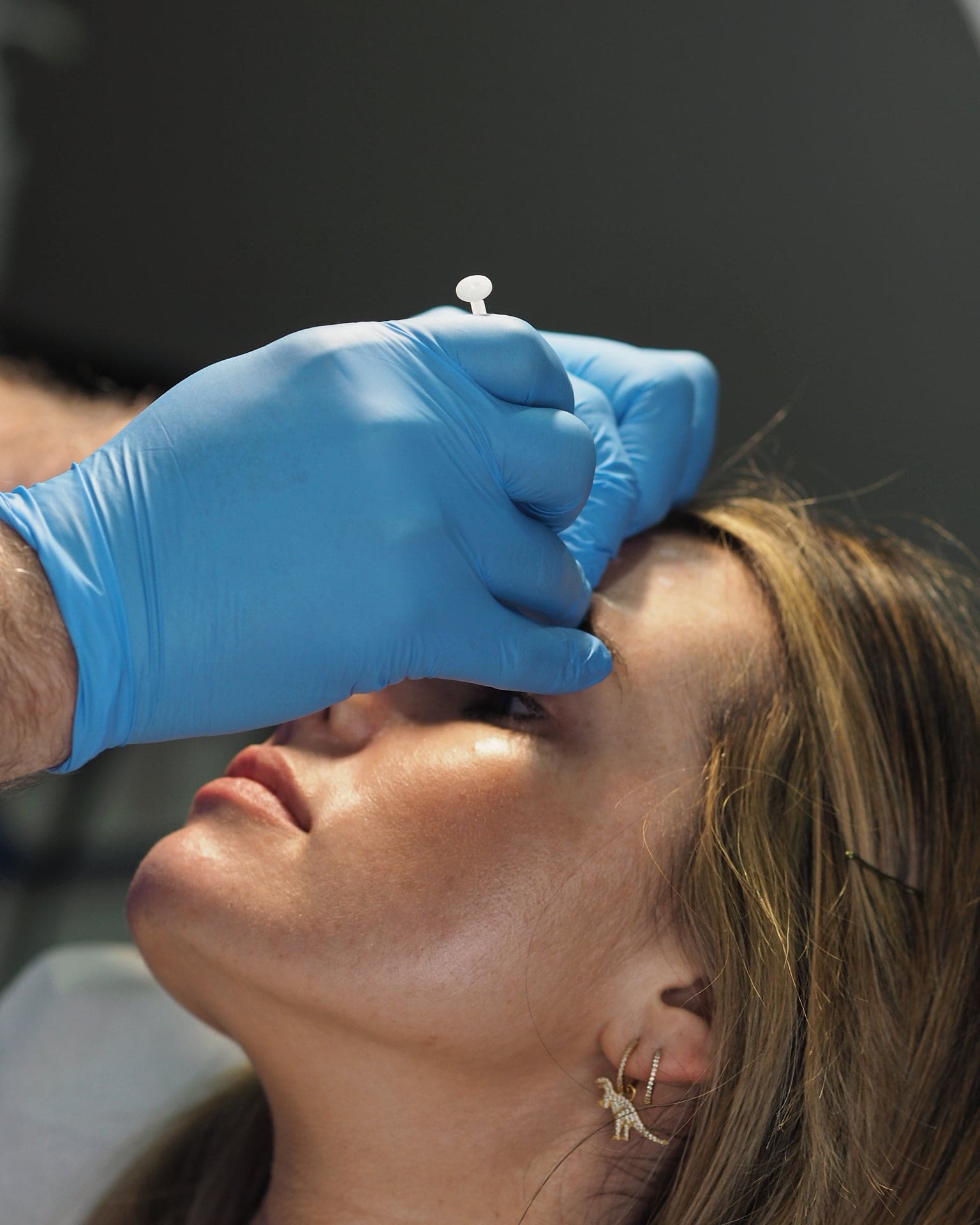Breast Augmentation
Information for Patients having a Breast Augmentation (breast enlargement) Operation
This leaflet is for anyone having breast implants to enlarge their breasts; it will help you understand the operation and to know what to expect from your hospital admission.
It is important that you read and understand this leaflet before agreeing to have the operation. . Please bring this leaflet into hospital when you are admitted.
What is a breast augmentation operation?
- A breast augmentation is an operation to increase the size of your breasts, usually by using silicone implants.
- Breast augmentation surgery does not alter your chest measurement, but will alter your cup size.
- Your surgeon will not be able to guarantee a cup size, but your breast size will be appropriate to your height and body structure.
Why are you having a breast augmentation?
You may be having this operation because you:
- Are not happy with the size and shape of your breasts.
- Wish to regain breast shape or size, for example after having children.
- Wish to correct uneven breasts (asymmetry).
does not heal properly and the wound may breakdown or gape. If this happens you will require dressings for a longer period of time than usual; rarely, a further operation may be needed as your breast implant may have to be removed as a result of the wound breakdown and or infection. After wound breakdown your scar may not have as good a cosmetic result than if your wound had healed without problems.
- Scarring. You will have permanent, visible scars on your skin. Scars tend to improve over a period of 18 months following surgery. In some people, for unknown reasons, scars can become raised, red and lumpy; unfortunately this is largely beyond surgical control. The risk of this occurring on the breast is greater if you have already developed thickened scars following accidents or operations elsewhere. The way a scar develops depends as much on how your body heals as it does on your surgeon’s skills.
- Difference in size or shape of one breast compared to the other (asymmetry). After augmentation, some degree of asymmetry of shape and size of the breast and of the scarring may be evident. It is not always possible to produce a natural cleavage, and your implant may not drop to the side when you lie down. Your implanted breasts may feel firmer than your natural breasts. If you are concerned about asymmetry after the breasts have had at least 12 months to settle you should discuss this with your surgeon. A further operation may be necessary to achieve the best result.
- Breast-feeding. Implants do not interfere with your ability to breast-feed.
- Mammography. Breast implants could interfere with the ability of x-rays to detect the early signs of breast cancer. Whenever you have a mammogram you should tell your radiographer that you have implants so that the most appropriate method of screening can be used.
- ‘The silicone controversy’. It has been reported that a number of women have experienced serious illness following silicone gel implant surgery. The Independent Review Group (IRG) (1998) found no scientific relationship between silicone gel implants and immune reactions, or with any specific or non-specific illness affecting the whole body.
- Stretch marks. These are likely to worsen after augmentation and on occasions may develop as a result of the operation.
- Cleavage. Your cleavage may appear widened following this operation and cannot be guaranteed in its width or narrowness.
- Rotation of implants. This may occur in a small number of people in the region of 2% when shaped implants are used and may require an operation to correct it.
The following possible complications are associated with your general anaesthetic and surgery:
- Deep vein thrombosis (DVT). This is a blood clot that arises in the deep veins of the leg or pelvis. A deep vein The alternative to having this operation is not to have it performed; if you decide not to have the operation, please discuss this with your consultant or a member of the medical or nursing teams.
How should you prepare for surgery?
- If you are overweight you will be asked to reduce your weight to within normal limits for your height. You will need to achieve this weight reduction before admission to hospital. If you need help to reach your target weight your GP may be able to refer you to a dietician.
- If you are significantly under weight, you may be asked to gain weight to within your normal limits for your height, before your operation
- If your GP prescribes aspirin, ibuprofen or other medications which may cause bruising or bleeding, you may be asked to stop taking these for a period of time before your operation. These medications may increase the risk of bleeding during and after your operation. Your surgeon will advise you about this when you see him / her in clinic.
- If you normally take warfarin tablets you may be asked to stop taking these 3 days before your operation. You may also be asked to have a blood test on the day of your operation
- If you take the oral contraceptive pill or HRT you may be contacted by the hospital and asked to stop taking them. If you do stop taking the contraceptive pill remember to use some other method of contraception to avoid pregnancy.
- If You may have one or more drain tubes coming from your wound areas; these will allow any excess blood to drain into a bottle attached to each tube. The drains will be removed when there is only a minimal amount of drainage. You may have stitches and are likely to have a dressing over your wounds.
- There will be bruising, swelling and discomfort following your operation, and you will be offered pain relief either by injections or tablets.
- You may have a drip, usually in your hand or arm, to replace any fluid lost during your operation. You may lose blood at your operation, rarely you may need a blood transfusion to replace this, or you may be prescribed iron tablets to correct the problem.
- You will generally be encouraged to get up the day after your operation, but you should limit the use of you arms to routine tasks such as eating and brushing your teeth. Avoid knocking your breasts.
Going home
- You will normally be allowed to go home after your drains are removed, which is usually the next day following surgery. If you do not have drains you may be able to go home the day after your operation.
- You may be prescribed a weeks supply of painkillers to take home. If you need a further supply you should contact your own doctor.
- When you are discharged from hospital you should use your arms normally but do not push or pull any heavy 3 months following surgery. This follow up regime may vary.
What can go wrong?
- It is normal to have some bruising, swelling and tenderness around your breasts following the operation. On occasions you may experience self -limiting hypersensitivity of the nipple areola complex.
- However if you suffer from any of the following symptoms after your discharge from hospital you should telephone the plastic surgery ward for advice:
- Persistent or increasing levels of pain.
- Fever.
- A feeling of heat in your breasts.
- Redness or swelling of your breasts.
- Tiredness or fatigue that lasts longer than three weeks.
- Shortness of breathe or pain when you breathe in deeply.
When can you start your normal activities again?
- You should not drive until you can wear a seat belt comfortably and feel able to perform an emergency stop, this could be up to 6 weeks following surgery. Your insurance company may refuse to meet a claim if they feel you have driven too soon. It is also advisable to contact your insurance company with regards to cover following a general anaesthetic.
- You should not go back to work until instructed by your surgeon. This could be in the region of 3 weeks depending on your job and implant type.
What are the risks, consequences and alternatives associated with a breast augmentation?
In the majority of cases this operation is carried out very successfully with good cosmetic results, however as with any surgical procedure there is a small chance of side effects or complications. This list of complications is not intended to put you off having the operation but you need to be aware of any potential complications before you consent to having surgery.
- Bleeding. You may have excessive bleeding from within the breast envelope, which may result in a collection of blood (haematoma) beneath the wound site. If this occurs you could experience excessive pain and swelling in the breast tissue. The collected blood may need to be removed in the operating theatre; this may necessitate another operation.
- Wound infection. There is a risk of wound infection, which can occur at any time following surgery. Symptoms of infection may include increased swelling, redness, fluid leakage, which may smell offensive, and increased pain at the site of the operation. If your wound becomes infected you may need treatment with antibiotics, occasionally this may mean admission to hospital for antibiotics to be given through a drip. After a wound infection, healing may be delayed and you may need dressings for a longer period than normal.
- Wound breakdown. Wound breakdown may occasionally occur following surgery. It may happen if the stitch line
- Nipple and skin sensation. You may have reduced or permanent loss of sensation to your nipple or breast skin after this operation. Hypersensitivity may occur to the nipple areola, which maybe self-limiting.
- Capsular contracture. Over time your body may form a wall of scar tissue known as a fibrous capsule around your breast implant. This capsule contracture is noticeable as an apparent hardening of your breast. If this happens you may need a further operation to remove the capsule or release the scar tissue, and if appropriate, to replace the implant.
- Rupture of a silicone implant. Rupture means the development of a split or hole in the implant. Breast implants are thought to have a life expectancy of 7 –12 years, however this does not mean an automatic replacement at this time. If your implant ruptures you may need a simple operation to remove or exchange it.
- Leakage of silicone. If your implant ruptures, the silicone gel will usually remain within the capsule that the body forms, and can be removed if the ruptured implant is removed. Occasionally the silicone can spread outside the capsule and into the breast, surrounding tissues or into the armpit, where it can form small lumps known as siliconomas or silicone granulomas. In this case some breast tissue may be lost when the implant is removed.
- Creasing and folding of the implant. As you develop a capsule around your implant you may notice kinking, rippling and visible or palpable folds in the implant. These are most often seen in women with very little breast tissue. thrombosis can happen if your mobility is restricted or you are inactive for a time following your operation. You may be given injections that help to prevent this from happening. You can reduce the risk of deep vein thrombosis by wearing the elastic stockings supplied, during and after your operation and moving your legs about whilst you are in bed. Getting up and walking as soon as you are well enough may also reduce the risk of a DVT.
- Chest infection. A chest infection can occur following any general anaesthetic. You can reduce the risk of this happening by taking regular deep breaths following surgery and getting up and sitting out of bed as soon as you are well enough. If you smoke you can reduce the risk of a chest infection by stopping smoking for at least a month prior to your operation.
- Anaesthetic risks and complications. You will need a general anaesthetic. Your anaesthetist will give you more information about your anaesthetic and will discuss anaesthetic risks and complications with you prior to your surgery.
- The life expectancy of a silicone implant may vary and can range from 7-12 years, see above
- BIA-ALCL and BIA-SCC are conditions that are linked to silicone breast implants, Breast Implants Illness BII link to silicone breast implants is currently being investigated. For further information please click on the links breast-implant-associated-anaplastic-large-cell-lymphoma-bia-alcl , https://breastaugment.co.uk/breast-implant-associated-squamous-cell-carcinoma-bia-scc/, https://breastaugment.co.uk/breast-implants-illness-bii/
There may be other risks specific to your individual case; your surgeon or nurse will discuss any further risks with you.
If you are concerned about any of these risks or have any further queries, please speak to your consultant or a member of the medical team. you do not hear from the hospital, then continue to take your medication as normal.
What happens when you arrive in Hospital?
- A resident doctor along with the nursing staff would admit you and your consultant would take you through the informed consent form and perform any necessary preoperative photographs and markings. You will also
- If you take prescribed medication other than those previously mentioned, please continue to take these as normal. Please also bring all your tablets, inhalers or sprays into hospital with you.
- You may be asked to attend a pre assessment clinic at the hospital
- It is advisable to have a bath or shower before your operation
- If you have any questions or concerns about your operation, please ask your surgeon or a member of the nursing staff for assistance.
What can you expect after your operation?
- The operation will take about 45-90 minutes to complete depending on complexity, however you will be in the operating department for longer than this to allow time for recovery.
- The nurse looking after you will regularly check your wound, your drains if you have any, and your blood pressure and pulse after you return from theatre. objects for 3 weeks, you should also avoid any vigorous arm movements during this time.
- You do not need any special care at home, however if you have small children it may be advisable to arrange for someone to help you to care for them.
- Please keep your dressings dry. Please do not remove your dressings and avoid touching your wound as this could cause an infection.
Follow up care
- You will be given an appointment to return to the plastic surgery dressing clinic for a wound check and removal of stitches if you have any; usually within 10 days of your operation
- You will need dressings until your wounds have healed, these may be done at the dressing clinic or you may have a district nurse or practice nurse to redress your wounds.
- You will need to wear a well fitting, supportive bra without wires such as a sports bra, after the dressings are first removed. This bra can be worn over dressings if necessary and should be worn day and night for a period of time specified by your consultant.
- An under wired bra is not worn until 6 weeks have elapsed
- Once your wounds have healed, massaging your scars regularly may help them to settle down. Massaging your breasts may also be of benefit.
- You will receive an appointment to see your consultant in the out patients department at approximately 6 weeks and
- Please ask if you need a doctor’s certificate for your work.
- You may resume sporting activities approximately 6 weeks after your surgery, however you should stop if you experience pain or discomfort during the activity. You should wear a well fitting sports bra during any sporting activity.
Other contacts
- Department of Health publication: Breast Implants, Information for women considering breast implants. Copies are available free by writing to: Department of Health, PO Box 777, London SE1 6XH.
- The report of the Independent Review Group: Silicone Gel Breast Implants (1998). Available from: Silicone Gel Breast Implants IRG. Tel: 020 7972 8077,
Website: www.silicone-review.gov.uk
Website: www.breastaugment.co.uk offering breast enlargement surgery (Breast Augmentation, Boob Job) at locations in Liverpool,Wirral, Chester, North Wales and by arrnagement in London.
We use one of the best breast implants on the market with FDA accreditation and CE marks. These are manufactured by Mentor which a Johnson & Johnson company. click on the link to see the range of the breast implants available, Mentor Breast Implants catalogue. Mentor Breast Implants Catalogue





